What's New
Displaying results 2461 - 2470 of 4914

Resource | Publications,
With support from UNICEF EAPRO, Youth LEAD aims to surface the issues of adolescent key populations including adolescents living with HIV through their personal stories. This book presents seven stories of adolescents in three countries, namely, Thailand, China and the Philippines with an aim to inform ways to support and strengthen HIV programming and policy development in the region. Most importantly, these stories reflect realities of adolescents from key populations that may inspire other adolescents on how they are able to weather the storm and fight for their rights.
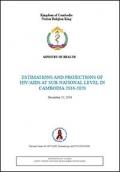
Resource | Publications,
As a result of the declining epidemic in Cambodia and evolving responses, over the last two years national stakeholders have started conducting epidemiological and programmatic analysis at the sub-national level. Therefore, the programme needs province specific estimation and projections to guide programme implementation and track the response at decentralized level as it moves towards national elimination targets. This has generated a strong demand for conducting a new round of HIV/AIDS estimation and projection for the period 2016 to 2020 and beyond and for the first time also producing sub-national level PLHIV estimates.
The main methodology adopted for the estimation and projection included review of all relevant latest data produced through surveys/surveillance, research, programmes and projects to be used with the updated versions of AEM and spectrum, and developed consensus to use informed assumptions in the case of data gaps.
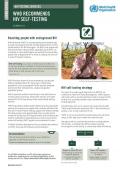
Resource | Fact Sheets,
HIV self-testing should be offered as an additional approach to HIV testing services.
HIV self-testing (HIVST) is an empowering and innovative way to reach more people with HIV and help achieve the first of the United Nation’s 90–90–90 targets – for 90% of all people with HIV to know their status by 2020. Expanded use of HIVST can contribute to these global targets by reaching first-time testers, people with undiagnosed HIV or those at ongoing risk who are in need of frequent retesting.
HIV self-testing is a process in which a person collects his or her own specimen (oral fluid or blood) and then performs
an HIV test and interprets the result, often in a private setting, either alone or with someone he or she trusts.
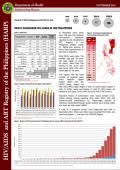
Resource | Fact Sheets,
In November 2016, there were 758 new HIV antibody sero-positive individuals reported to the HIV/AIDS and ART Registry of the Philippines (HARP) [Table 1]. Eighty-nine percent of those were asymptomatic at the time of reporting.

Resource | Publications,
Sex workers experience extreme violence – at work, in prison and police stations, in their neighbourhoods and in their homes, from family members, police, clients, intimate partners and strangers. This violence is gender-based. Male, female and transgender sex workers are targeted because they challenge traditional gender norms and are denied fundamental human rights – to equal protection under the law, protection from cruel, inhuman and degrading treatment, and to the highest attainable standard of health.
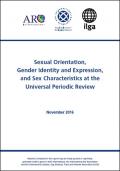
Resource | Publications,
This report provides an overview on how the Universal Periodic Review (UPR) has shaped the protection of the rights of lesbian, gay, bisexual, trans and intersex (LGBTI) persons to date. It also addresses the challenges and the ways to try and turn the UPR into a greater mechanism to protect the rights of LGBTI persons on the ground.
While it may not be the best tool for immediate change, it can start the ongoing processes at the national level and open up new avenues for engaging governments on issues related to sexual orientation, gender identity, gender expression and sex characteristics (SOGIESC). Over its first two cycles, the UPR has positively evolved as a truly multi-stakeholder process. Both states and civil society have gone through a learning process in order to work not only with their respective peers, but also together.
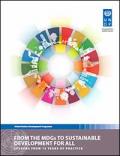
Resource | Publications,
The world cannot afford to start over with the SDGs – but must build on the improvements made under the Millennium Development Goals (MDGs). Progress will only be significant enough to achieve the Sustainable Development Goals (SDGs) if leaders avoid the temptation to start from scratch. Many countries recognize this and are adapting existing strategies and repurposing the institutions that enabled MDG progress. Their challenge is to understand, prioritize and sustain what works and adjust initiatives that have stalled, while strengthening underlying capacities, mobilizing all possible resources and putting in motion the farsighted polices the SDGs require.
This Report seeks to help them by providing key lessons from the MDG era, distilled by governments and stakeholders themselves, through National MDG Progress Reports. Between 2013 and 2015, 55 countries produced National MDG Progress Reports assessing the totality of their countries’ MDG experience. Many detail lessons they now apply to implement the SDGs. Most echo lessons UNDP learned from its experience supporting over 140 countries to achieve the MDGs.
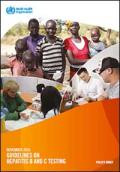
Resource | Guidelines,
These are the first WHO guidelines on testing for chronic Hepatitis B virus (HBV) and hepatitis C virus (HCV) infection and complement published guidance by WHO on the prevention, care and treatment of chronic HCV and HBV infection. These guidelines outline the public health approach to strengthening and expanding current testing practices for HBV and HCV infection, and are intended for use across age groups and populations. The primary audience for these guidelines are national programme managers in ministries of health and health-care providers in LMICs responsible for planning and implementing hepatitis testing, prevention, care and treatment services.

Resource | Publications,
In 2015, 193 United Nations member countries adopted the Sustainable Development Goals (SDGs) and committed to “leaving no one behind” in the effort to end poverty and inequality. Lesbian, gay, bisexual, transgender, and intersex (LGBTI) people throughout the world have led global efforts to raise awareness of their experience of ongoing discrimination, exclusion, and violence. Despite some gains that have made information more available, huge gaps in research and data on LGBTI experiences persist in every country, blocking progress toward inclusion and the realization of human rights for all. Clearly, significant donor investment in strategic research on LGBTI inclusion is needed, in both the immediate and the long term, to provide a reliable evidence base that can inform policies, legislation, programs, and investments to advance the human rights and inclusion of LGBTI people in national and global efforts.

Resource | Laws and Policies,
This first edition is a compilation of laws, administrative procedures and processes setting out the ability and limits of trans and gender-diverse people around the world to change their sex/gender markers and names on official identity documents. It focuses on these two aspects because they are often what trans and gender-diverse people first seek to change in order to access other rights and services in their everyday lives. They are also critical when crossing borders and establishing one’s identity in a new country or city—a scenario which is perhaps more common for trans people than the general population.
This report sets out whether a process is established in primary legislation, through a court application, in an administrative rule, in policy, or simply not defined. The distinction between these will be of use to advocates who seek to undertake either legal reform or policy change in these countries.





